Last updated: June 27, 2017
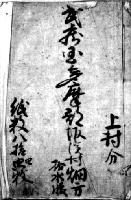
Land survey book of Sakahama Village (Hatakata)
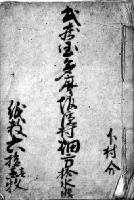
Land survey book of Sakahama Village (Hatakata)
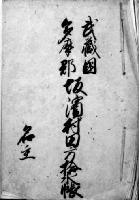
Land Survey Book of Sakahama Village (Takata)
The Ichimura family in Sakahama preserves many ancient documents and literary materials from the Edo period to the Meiji period. The Ichimura family was a family that served as a village official in Sakahama Village during the Edo period, and most of the documents were created based on the fact that they served as village officials. The contents include the land survey book of Sakahama Village from the Edo period, documents related to annual tax, documents related to the appointment and dismissal of village officials, documents related to shrines and temples, etc. With 1,066 old documents from the Edo period, the largest collection in the city, it is one of the most important historical documents in terms of both quality and quantity. The ancient documents were created over a period of 239 years, from 1629 to 1868, and contain information on the state of Sakahama Village at that time and the lives of the farmers who lived there. We have all the materials you need to know.
This is the land survey book for Sakahama Village created in 1753. A land inspection book is an official record of the results of land inspections carried out in each village. The land inspection book includes the land's famous places (location), ranking (grade), area (area), and the name of the contractor (cultivator). etc., and by confirming this, it was intended to secure the annual tax (harvested rice) that was collected every year. The Ichimura family has preserved a total of 10 land survey books from the 3rd year of the Horeki era and the 10th year of the Tenpo era (1839).
The annual tax allocation letter is a request document that states the annual tax to be paid for each location in that year. This document was issued by Mr. Nakano, a magistrate of the shogunate, to the Ichimura family, a village official. This is a Nengwari Tsukejo created in 1629. In addition, there are many documents such as Nengukaisaitegata, which is a certificate of payment of annual tax in response to Nengwaritsukejo.
This is a letter of offer from the land office issued in 1857 when the head of the land was replaced. In this year, in Sakahama Village, the Nanushi was replaced by Izaemon Tominaga to Ginpei, the son of Doujin. Ginpei, the new Nanushi, was granted the Myoji Taito sword. Furthermore, since Ginpei was ill, a kumigashira was assigned to handle official duties such as leaving the capital in his place. This document shows the state of affairs of the Ichimura family, who worked as Kumigashira in Sakahama Village.
This is a document from 1823 about the festival at Tenma Shrine in Sakahama. At that time, the festival at Tenma Shrine was held on August 25th every year, and during this festival a lion head (shishigashira) would parade around the house of the headman (kashirayaku). This is a document that describes how a dispute arose over a trivial matter, and a peace agreement was reached.
In the Edo period, replacing the roofs of houses was a collaborative effort among villagers. This was because re-roofing required a lot of manpower and cost. This document was created in Bunka 11 (1814), and it was held in Sakahama Village to replace the roof. It is a record of the conduct of business. It was decided that each villager would bring 200 mon, five tassels of rope, and two sticks of firewood to help replace the roof for three days at a time.
References cited. "Old Documents of Inagi City (1)", "Inagi City History Volume", "Inagi City History Materials Volume 2"
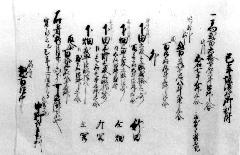
"Sakahama Village Annual Tax Allocation Letter"
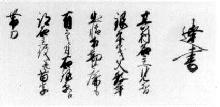
"Letter of appointment for the appointment of the main character and permission to wear a sword with a surname"
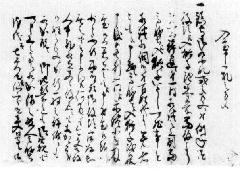
"Certificate for one case of Tenman Shrine Festival Shishigashira"

"Kayagae Renchu Kakucho"
Inagi City Education Department Lifelong Learning Division Tel: 042-377-2121